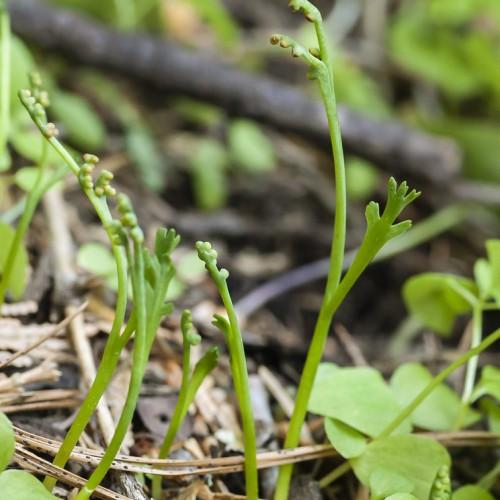
Mountain Moonwort
Botrychium montanum
Also Known As - Mountain Grape,Western GoblinWatering:
Average
Hardiness Zone:
Sun:
part shade,full sun
Growth Rate:
Low
watering
Michigan Moonwort (Botrychium michiganense) should be watered once a week in the spring and summer months, and every 2 to 4 weeks during the fall and winter. Water deeply, focusing the stream directly at the soil and saturating it thoroughly. Avoid wetting the leaves and foliage whenever possible. Make sure to water the entire root zone, as the Michigan Moonwort has a deep root system. Allow the soil to dry out between waterings, as this plant does not tolerate wet feet or standing water.
sunlight
Michigan Moonwort (Botrychium michiganense) is a dark green fern-like plant that prefers partial shade to full sun. It grows best with approximately 4 to 6 hours of sunlight per day. However, during the summer months when the sun is stronger and the temperatures are higher, Michigan Moonwort benefits from having some shade during the noon-time and early afternoon hours. Michigan Moonwort does not require supplemental lighting, but for best results during the winter and early spring months, it should be moved to an area with more direct the sun exposure.
pruning
Michigan Moonwort (Botrychium michiganense) should be pruned in order to maintain a neat, balanced appearance and prevent overcrowding. Pruning should be done in late winter or early spring, before new growth begins. Prune only selectively and no more than 1-third of the plant's foliage at any 1 time. Be sure to make clean cuts just above a set of leaves or growing node so that the plant can heal quickly. Removal of all flower scapes should be avoided as this can leave a disheveled look to the plant.
